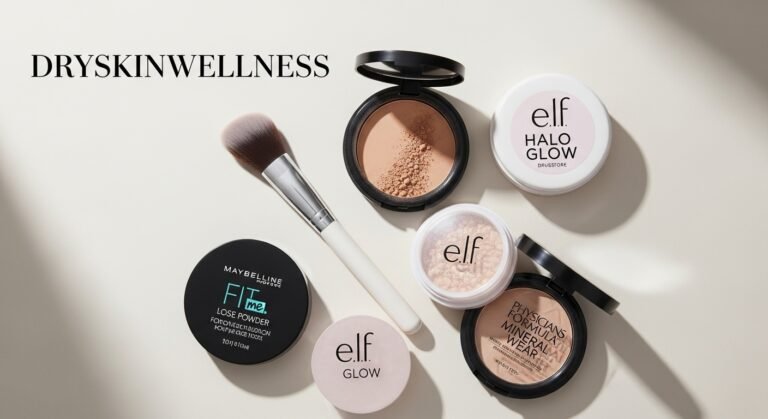Unveiling The Connection: How Can Dry Skin Affect Moles?
Dry skin is a common dermatological concern that affects people of all ages. While it’s often associated with discomfort and cosmetic issues, an intriguing connection exists between dry skin and the health of your moles. In this exploration, we delve into how can dry skin affect moles, emphasizing the importance of understanding this relationship for overall skin health.
The Skin-Mole Dynamic: A Brief Overview
Before we delve into the impact of dry skin on moles, let’s establish a foundational understanding of moles themselves.
Moles, or nevi, are clusters of pigmented cells that can appear anywhere on the skin. They are typically harmless, but their size, shape, or color changes may indicate underlying issues, including the potential for skin cancer.
“moles due to dry skin” is not a recognized medical or dermatological condition. Moles, also known as nevi, are clusters of pigmented cells on the skin that are typically harmless but can occasionally undergo changes that may warrant medical attention.
On the other hand, dry skin, or xerosis, is a condition where the skin lacks sufficient moisture, leading to symptoms such as flakiness, itching, and discomfort.
How Dry Skin Develops: A Primer
Dry skin, or xerosis, results from the loss of water content in the outermost layer of the skin, the epidermis. This can be attributed to various factors such as weather conditions, age, genetics, and certain lifestyle habits. When the skin loses its natural moisture, it can lead to itching, flakiness, and a heightened sensitivity to environmental factors.
Impact of Dry Skin on Mole Health
Disruption of Skin Barrier Function:
Dry skin compromises the skin’s natural barrier function, crucial for protecting the body from external threats. This weakened barrier allows irritants and allergens to penetrate the skin more easily, potentially influencing the health of moles.
Increased Irritation and Itching:
Dry skin often accompanies itching, which can lead to increased scratching. Continuous scratching may cause trauma to the skin and mole areas, potentially altering the appearance and integrity of moles.
Altered Mole Appearance:
Dry skin can contribute to changes in mole appearance. Dehydration and flakiness can make moles appear more prominent or cause them to blend in with surrounding dry skin patches, making monitoring challenging for suspicious changes.
Potential for Inflammation:
Inflamed and irritated skin is more susceptible to various issues. Dry skin can create an environment where moles are exposed to inflammation, which may impact their health.
Maintaining Mole Health in the Face of Dry Skin
- Hydration is Key
Keeping your skin well-hydrated is fundamental to overall skin health, including the well-being of your moles. Regularly moisturizing dry skin can alleviate symptoms and create a more favorable environment for maintaining mole integrity.
- Gentle Skincare Practices
It’s crucial to adopt gentle skin care practices when dealing with dry skin and moles. Avoid harsh exfoliants and abrasive scrubbing, as these can exacerbate dryness and harm moles.
- Regular Monitoring
Individuals with moles, especially those in dry skin-prone areas, should engage in regular mole monitoring. A dermatologist should promptly address any size, shape, color, or sensation changes.
- Sun Protection
Dry skin is often more susceptible to sun damage. Since prolonged sun exposure is a risk factor for mole changes and skin cancer, applying sunscreen and practicing sun-safe behaviors become even more critical for individuals with dry skin.
Specific skincare products recommended for individuals with moles and dry skin
It’s advisable to use fragrance-free, hypoallergenic moisturizers to keep the skin hydrated. Avoid harsh exfoliants and abrasive scrubs, which can exacerbate dryness and harm moles.
Does dry skin increase the risk of skin cancer in the mole-prone area?
While dry skin doesn’t increase the risk of skin cancer, the associated factors, like itching and scratching, can contribute to mole changes. Regular monitoring and sun protection are crucial for minimizing the risk.
Is there a correlation between age-related dry skin and mole health?
Aging can contribute to dry skin, and individuals should be mindful of mole health as they age. Regular dermatological check-ups become even more critical to monitor any changes in moles.
FAQ
Q1: Can dry skin directly cause changes in the appearance of moles?
A1: While dry skin itself may not directly cause changes in moles, the associated itching and scratching can impact mole health. Continuous trauma from grind can alter the appearance and integrity of moles.
Q2: How does dry skin affect the skin barrier and its role in mole health?
A2: Dry skin compromises the skin’s natural barrier function, making it more susceptible to irritants and allergens. This weakened barrier can indirectly influence the health of moles by exposing them to external factors.
Q3: Is there a specific link between dehydration and changes in mole appearance?
A3: Dehydration can make moles appear more prominent, and the flakiness associated with dry skin may obscure the borders of moles. It’s essential to stay hydrated and moisturize the skin to maintain an optimal environment for mole health.
Q4: Can sun exposure worsen the impact of dry skin on moles?
A4: Prolonged sun exposure can exacerbate dry skin and is a risk factor for mole changes and skin cancer. Sun protection, including sunscreen and sun-safe practices, is crucial for individuals with moles, especially in dry skin-prone areas.
Q5: How frequently should individuals with moles and dry skin monitor their skin?
A5: Regular monitoring is essential. Perform self-checks monthly and consult a dermatologist promptly if you notice any changes in your moles’ size, shape, color, or sensation.
Conclusion: Nurturing Your Skin, Protecting Your Moles
Proactive care is vital in the intricate relationship between dry skin and moles. Understanding the impact can dry skin affect moles empowers individuals to take steps towards maintaining healthy, vibrant skin.
Adopting a skincare routine that prioritizes hydration, gentle practices, and regular monitoring allows you to navigate the delicate balance between dry skin and mole well-being, ensuring that your skin remains a resilient and protective barrier for years to come.


